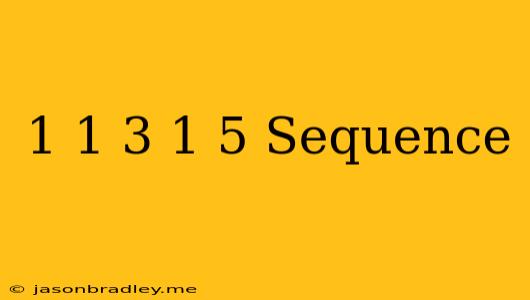Unraveling the Mystery: The 1 1/3 1/5 Sequence
The sequence 1, 1/3, 1/5 might seem simple at first glance, but it holds a fascinating mathematical story. It's not just a random collection of fractions; it represents a pattern based on the reciprocals of odd numbers. Let's dive deeper into understanding this sequence.
The Pattern Revealed
The sequence starts with 1, which is the reciprocal of 1. The second term is 1/3, the reciprocal of 3. Following the same logic, the third term is 1/5, the reciprocal of 5.
This pattern can be generalized as: 1/(2n+1) where 'n' is a natural number starting from 0.
Mathematical Representation
We can formally represent this sequence using the following formula:
a<sub>n</sub> = 1 / (2n + 1)
where:
- a<sub>n</sub> represents the nth term of the sequence.
- n is a natural number (0, 1, 2, 3, ...)
Properties and Applications
The sequence 1, 1/3, 1/5 has several interesting properties:
- Converges to Zero: As the value of 'n' increases, the terms in the sequence get progressively smaller, approaching zero.
- Harmonic Series Connection: This sequence is closely related to the harmonic series (1 + 1/2 + 1/3 + 1/4 + ...), which is a famous example of a divergent series.
- Applications in Physics and Engineering: This sequence finds applications in various areas, including:
- Electric circuits: Calculating the impedance of a series RLC circuit.
- Wave phenomena: Analyzing the interference patterns of waves.
Exploring Further
While the sequence 1, 1/3, 1/5 is relatively simple, it provides a foundation for understanding more complex mathematical concepts like:
- Series and Convergence: Exploring the behavior of infinite sums.
- Fourier Analysis: Decomposing periodic functions into a sum of simpler functions.
By understanding the simple patterns within this sequence, we gain a deeper appreciation for the beauty and interconnectedness of mathematics.
